Question:
Essay discussing the role played by the setting in "Popular Mechanics." Analyze the central characters relationship to their surroundings. Does the setting limit the characters options or influence the development of the plot? Does the setting play any significant role in enhancing the theme of the story?
(873 Words)
"Popular Mechanics" was written in order to make the audience imagine their own details. The descriptions in this story are very basic and plain, the man and woman in the story are nameless with no clue of physical description, and there is no mention of what city, state or country the story takes place. This allows the reader to picture the surroundings and details of the story in their own way, maybe the reader has heard of or been in similar situations and they can put their own faces and locations into the story. The setting is given in very little detail, but it is also the most detail of any element in the story.
The setting is a very important part of the story and is used to symbolize, foreshadow and relate with the events and characters.
The setting described in the first paragraph prepares the reader for a dark, uncomfortable story. "Early that day the weather turned and the snow was melting into dirty water." (Paragraph 1) All of these elements in the setting outside the house are used as symbols for something inside the house. This shows that something good or pure, "snow" or relationship, is turning into something ugly, "dirty water" or separation, and it is happening fast, "early that day."
The first paragraph continues, "Streaks of it ran down from the little shoulder-high window that faced the backyard." (Paragraph 1) This paragraph gives very little detail of the house, but enough to get a mental picture. In this line, "it" refers to the dirty water which is a symbol for the break down of the relationship of the man and woman. The house is small, shown by the description of a "little shoulder-high window." The story later gives another description that the house is small in paragraph eleven, "She stood in the doorway of the 'little kitchen', holding the baby." The little kitchen is most likely inside a little house. Even though the reader is never specifically told that the house is little, the audience gets small details that spark something in the reader to imagine a small house. The little house can tie in with the characters fight. The house may be too small for the woman to be comfortable raising a child there, or it may be too small for the man's pride, both these situations can lead to arguments. The most obvious tie in with the characters and the small house is the fact that it is too small for the both of them, the man is leaving and the woman is glad he is. A bigger house means more success, more pride, and more happiness. All of these elements can possibly lead to a happier relationship.
The fact that the window faces the backyard gives the events that go on inside the house a sense of privacy. The neighbors can see what is going on in the front yard; the backyard is used for privacy, when you do not really want everyone to know what you are doing. This description symbolizes the bad relationship that develops and "runs" through the small house when the doors are closed.
The next line foreshadows the events that happen in the house. "Cars slushed by on the street outside, where it was getting dark. But it was getting dark on the inside too." Here the story is pointing out that what is going on outside is going on inside too, and the reader should make the correlation at this point. The characters relate to the setting here because they are getting dark on the inside as well; the heart, mind and soul of the characters are growing dark feelings. The fact that it is "getting dark on the inside too" shows that things such as daylight, happiness, love and a relationship are coming to an end and things such as darkness, anger, sadness, and hatred are beginning. The setting is also used symbolically in the story when the flower pot is broken, "In the scuffle they knocked down a flowerpot." (Paragraph 26) The flowerpot is used to symbolize the breaking up of the man and woman, and the breaking of the baby. Although the reader is not told if the baby was physically broken, the emotional and mental damage that a child goes through when their parents separate can be seen as a possibility for the child in the story.
The setting sets the tone for the story, symbolizes elements inside the house, relates with the characters and foreshadows the events of the story. All of these elements are very important to the story and they are all given in three short paragraphs (Paragraphs 1, 11, 26). The setting is given the greatest amount of detail while the rest of the story is given almost no detail, only stereotypical behavior. The reader is required to imagine their own timeline, faces, and many other details, but the setting is told to show the overall mood the writer wanted the reader to see. This proves that the setting is a very powerful element to show that the relationship between the man and the woman and everything that surrounds them is going from good to bad and eventually, everything is broken.
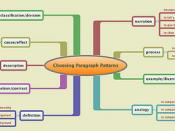
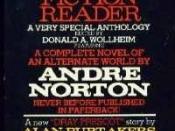


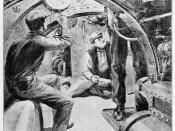
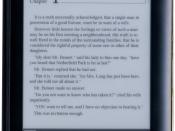
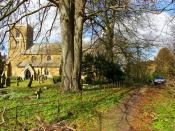
Good Stuff!!!
This is a good essay, it's obvious you've researched your topic well. It's very informative and reads nicely. Well done!
1 out of 1 people found this comment useful.